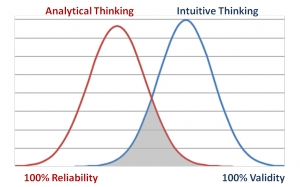Design Thinking, Stanford and Rottman focus on innovation!! (video)
The method is revolutionary and even if it does not use a brand new way of organizing ideas, it adds an important component, the users’ perspective .
I had the opportunity to get involved with the theme Design Thinking in two very interesting opportunities. One participating in a workshop with Stanford professors Martin Steinert and Larry Leifer, the last one being of the authors of the book Design Thinking, Understand – Improve – Apply (Understanding Innovation).
In the second one, I attended a lecture by Professor Roger L. Martin, from Rottman School of Business and one of the gurus of the subject at the University of Toronto, where I studied during the completion of my MBA.
Explaining the theme without actually experiencing it, is no simple task, but in this article I will discuss some of the most important points observed.
One of the key issues is the focus on balancing the analytical and intuitive aspects, so that we can achieve results that impact the spheres of reliability and validity of solutions.
Companies that seek innovation, generally tend to want that to happen based on assumptions of past experiences, since it seems to be more logical and safe, relying on historical data as if they were a guarantee of future performance.
 This behavior ends up tending to cause the future to be like the past and creates a false sense of security and assertiveness. However, as we know, it is impossible to predict the future. Said “validity” of ideas can only be verified in the future, once they happen, and that creates a dilemma that prevents many companies to achieve the so-called “leaps of the mind” .
This behavior ends up tending to cause the future to be like the past and creates a false sense of security and assertiveness. However, as we know, it is impossible to predict the future. Said “validity” of ideas can only be verified in the future, once they happen, and that creates a dilemma that prevents many companies to achieve the so-called “leaps of the mind” .
These “leaps” are called leaps of innovation and mean that certain ideas arise after a learning process, construction and deconstruction of thinking and perceptions and as such, are impossible to be proven in advance through an analytical approach, ie, reliability.
Because of these factors, in the Design Thinking laboratories of Stanford we feel like kids in kindergarten. Surrounded by tools and materials you can put ideas into practice, within the 7 seconds of each individual’s creativity time, confirmed in several studies.
Think about how many times you had that brilliant idea before bed, which was gone after a few seconds of distraction.
The process stimulates the convergence and divergence of ideas by removing judgement barriers and bringing into the game, different skills of several members of each group. The performance of the groups is directly related to empathy and emotional link, created among the members.
Without realizing it, the groups are brought to navigate through the “knowledge funnel” out of step the mystery about how to solve a particular problem, going through the heuristic phase or organization of ideas and the creation of an algorithm, or the solution or proposal to resolve the problem.
It is at this stage that prototypes of low adherence can be created, giving participants the opportunity to test their ideas quickly and at low cost, together with its users.
The change of viewpoint, it is also one of the strengths. Watch the video of Tim Browm, the precursor of the method.
But wait, where do the users mentioned in the beginning of this article come? Well, through the construction of the so-called “personas”, one can determine the profile of a particular target audience, seek information about it and experience the “customer journey” to really understand what are the important points for that user profile.
One should focus one third of the time of a project, on the understanding of who the users are.
With the completion of this method (do not call it a process), major innovations have been possible. Since the reduction of costs for a satellite assembling line to the launch of a new joystick for games that releases smoke after shooting.
At the center of this methodology there are some important items to note:
- Put the users, personas , in the center of the creative process;
- Look to deconstruct previous knowledge and encourage the flow of ideas, without judgment or prejudice;
- Create an enabling environment to facilitate creative features and building prototypes, breaking the hierarchy and language barriers;
- Nevertheless, keep small groups, preferably up to 4 individuals;
To open space for innovation within companies and constantly renew this cycle, it’s very important for any company seeking leadership and presence in the market in the long run.
There is no innovation without risk, but this can be minimized using the various thinking heads and divergent experiences in your existing organization.
Adopting this method, your company will certainly develop a winning formula that will combine the analysis and perception.
Leave your comments, share and browse other articles on the blog .
Category: Blog, Estratégia, Marketing, Vídeo






